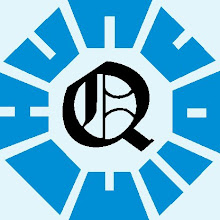I was trying to get something from one of Rousseau's maps, aka the "other" map, the one with the side-view and the crater on it.
I have a theory, that combining various parts of Oahu you can create the Island as seen on Rousseau's Maps. If this theory is true, then the side-view map should represent a part of Oahu. Because the word "cratère" appears on the map, we can assume that the map represents a volcano.
Oahu has a lot of volcanoes, however I tried with just a couple of them, because on my second attempt I had positive results. These are the map and the volcano I'm talking about. The volcano is Koko Crater in the southeastern part of Oahu.


As you can see, there isn't a perfect match, but they are *very* similar.

If the outline of the crater doesn't match perfectly, it is, however, very similar to the one of the crater on the map. Moreover, the visible side of the volcano in the image, is the south one, meaning that we're facing north. In Rousseau's map, this situation is shown too.
Then I found a topographical map of the volcano and created a 3D model. After a couple of days of work, this is the model I obtained. It represent the volcano from a height of 200 ft to 1200 ft (61m to 366m) and is created with an accuracy of 40 ft (at least, I guess).

When I looked at the model from above, it appeared as in this image.

Then I compared this image with an image of the crater from the "main" Rousseau's map. I don't know if the whole Koko Crater matches the crater on the map (it doesn't seem, anyway), but I think that at least the edge (red) of the crater matches almost perfectly. And the most strange (or maybe, amazing) thing is that the orientation of the image of the 3D model has North as up, as in the actual "main" map. So it didn't need rotating.

A couple of problem would remain: what about the scale, giving the crater a height of 3000m? I think it doesn't states the crater height; as you can see, on the opposite side of the map, there's a "latitude" scale, and the latitude cannot be measured in a line perpendicular to the Earth. Sometimes, however, lines are shown as vertical because of perspective, because measures on lines converging at a vanishing point would be as shorter as approaching to the point. So probably 3000m is the lenght of the crater in a North-South direction (the height scale, the latitude scale and the North Arrow are all vertical lines). Another problem would be: why, then, there's nothing behind the crater on the map? The only possible answer that comes to my mind is: probably Rousseau just wanted to draw the crater only and not the rest of the Island...
The conclusion is that it would seem that the side-view map represents the crater on the south as seen from a 000 direction. However, I'm still a little confused... I need clarifications... Or some help... Because something that yesterday seemed being senseless, today it has sense... And it's too much strange... And confusing...
The conclusion is that it would seem that the side-view map represents the crater on the south as seen from a 000 direction. However, I'm still a little confused... I need clarifications... Or some help... Because something that yesterday seemed being senseless, today it has sense... And it's too much strange... And confusing...






















